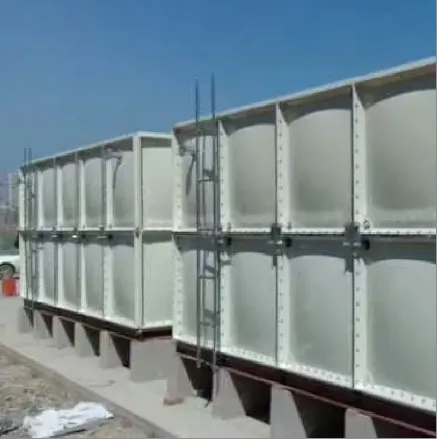loading...
- No. 9, Xingyuan South Street, Dongwaihuan Road, Zaoqiang County, Hengshui, Hebei, China
- admin@zjcomposites.com
- +86 15097380338
- Welcome to visit our website!
frp c channel
Understanding FRP C Channels Properties, Applications, and Benefits
Fiber Reinforced Polymer (FRP) C channels have emerged as a significant innovation in the field of construction and structural engineering. They combine the favorable attributes of composite materials with the traditional structural functionality of C channels to provide an ideal solution for various applications. In this article, we will explore the properties, applications, and benefits of FRP C channels.
Properties of FRP C Channels
FRP C channels are made by combining polymer resins with a reinforcing material, usually glass or carbon fibers. This unique composition endows them with several advantageous properties
1. Lightweight One of the most remarkable characteristics of FRP C channels is their lightweight nature compared to traditional steel or aluminum channels. This property makes them easier to handle and install, reducing labor costs and time during construction.
2. Corrosion Resistance Unlike metal channels, FRP C channels are resistant to corrosion from chemicals, water, and environmental conditions. This property is particularly beneficial in industries such as marine, chemical processing, and wastewater management, where exposure to harsh elements is common.
3. High Strength-to-Weight Ratio FRP C channels possess a high strength-to-weight ratio, allowing for substantial load-bearing capacity without the added weight. This feature enables engineers to create more efficient designs that reduce the need for additional structural support.
4. Flexibility in Design The manufacturing process of FRP allows for an array of designs and sizes. This flexibility can accommodate specific project requirements and custom applications, showcasing adaptability that traditional materials may not provide.
5. Thermal and Electrical Insulation FRP C channels do not conduct electricity and have low thermal conductivity, making them ideal for applications where electrical insulation is critical.
Applications of FRP C Channels
FRP C channels have a wide range of applications across various industries. Some of the most notable include
1. Construction Used in building frameworks, flooring systems, and supporting structures, FRP C channels offer a durable and long-lasting alternative to traditional materials.
frp c channel

2. Infrastructure They find applications in bridges, handrails, and walkways, where corrosion resistance and strength are paramount.
3. Marine Industry In shipbuilding and offshore platforms, FRP C channels are ideal due to their resistance to saltwater and other corrosive environments.
4. Industrial Settings The chemical processing and wastewater treatment industries utilize FRP C channels for their ability to withstand harsh chemicals and long-term exposure to liquids.
5. Transportation From frames in vehicles to structural components in rail transport, FRP C channels can enhance performance while reducing weight.
Benefits of Using FRP C Channels
The numerous advantages of FRP C channels provide compelling reasons for their adoption in various projects
1. Cost-Effectiveness Although the initial cost of FRP materials may be higher than traditional options, the long-term savings through reduced maintenance and extended lifespan can outweigh these initial investments.
2. Sustainability With increasing emphasis on sustainable building practices, FRP C channels offer an eco-friendly solution that often requires less energy to produce and can be recycled at the end of their lifecycle.
3. Improved Safety The insulating properties of FRP C channels reduce the risk of electrical hazards, while their corrosion resistance ensures structural integrity over time.
4. Less Downtime The durability and low maintenance requirements of FRP channels lead to less downtime in industrial applications, thereby enhancing productivity and efficiency.
Conclusion
FRP C channels represent a modern solution to traditional construction challenges. Their combination of lightweight properties, corrosion resistance, and high strength makes them suitable for diverse applications across industries. As organizations increasingly focus on sustainability and cost-effectiveness, the adoption of these innovative materials is likely to rise, paving the way for a safer, more efficient future in structural engineering.
-
The Rise of FRP Profiles: Strong, Lightweight, and Built to LastNewsJul.14,2025
-
SMC Panel Tanks: A Modern Water Storage Solution for All EnvironmentsNewsJul.14,2025
-
GRP Grating: A Modern Solution for Safe and Durable Access SystemsNewsJul.14,2025
-
Galvanized Steel Water Tanks: Durable, Reliable, and Ready for UseNewsJul.14,2025
-
FRP Mini Mesh Grating: The Safer, Smarter Flooring SolutionNewsJul.14,2025
-
Exploring FRP Vessels: Durable Solutions for Modern Fluid HandlingNewsJul.14,2025
-
GRP Structures: The Future of Lightweight, High-Performance EngineeringNewsJun.20,2025
